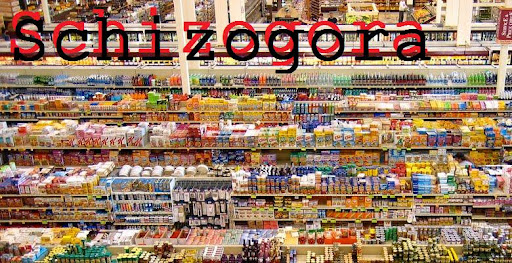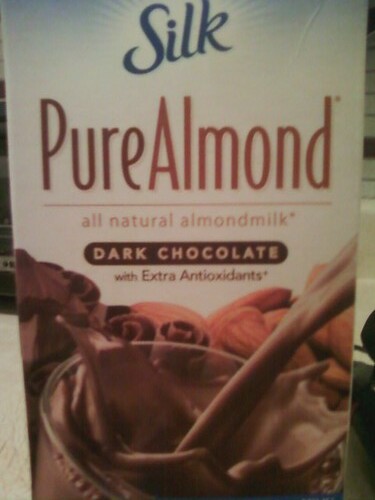
Moving away from the usual setup of this blog, I figured I'd engage with the more popular and mainstream chatter of food politics. The New York Times, being the moderate, liberal bedfellow of the food war machine, approaches most of the big issues on food in their painfully lackadaisical way. What does the FDA say; what does the Mayo-Clinic recommend; what has petty research on hamsters and rats allowed us to speculate about our constitution as humans. Though the New York Times does have its moments of clarity, where they might allow room for the unorthodox, for something radical that engages with the power politics and the irrefutable history of modern food industry, they cannot help but return to their moderating influences, resting assured with a religious-like faith that technology, scientists/doctors and government-controlled institutions are all operating toward an objectivity in the name of the well-being of its populace.
Milk Makeover In summary of the link I have provided, it is a small snippet of the New York Times reporting that various school systems have a dilemma over milk. School children prefer flavored milk, and they will consume it more regularly; however, flavored milk has a good deal more sugar. Trying to counteract the childhood obesity epidemic, school systems have been debating getting rid of the flavored milk altogether or even leaning it out by reducing the sugar content.
The New York Times adds its voice to the tower of babel concerning food obesity. Posing the current health epidemic as a matter of individual choice, plays into the
NYT's liberal ideology that wishes to placate the unfortunate with government programs, but will not acknowledge that the system is inherently designed to
disenfranchise groups, creating a
hierarchical structure of power and ultimately health. Oh, if we just offer a healthier choice to kids, they will consume fewer calories and less sugar and that will offset childhood obesity. Let's not acknowledge that children and school systems determine their consumption by federal government subsidies, pushing down the cost of corn, dairy and meat to the lowest possible prices and that choice on the part of the child or school system has little to do with it. Poverty and obesity are deeply linked.
But I don't want to get too deeply into the general idea of false choice and poverty. I prefer for now to focus on the mainstream ideas about what is healthful dairy consumption. The only issue about the milk that is of any concern to the people in this article is the fat, sugar and the resulting calorie content of the milk. The scientific-aesthetic of calorie obsession really tickles the fancy of those worshipping at the altar of technology, science and physics-envy. But it doesn't work because not all fats, sugars, calories are created equal.
The low-fat milk is accepted dogmatically in the article as being absolutely healthful without question. Isn't that odd when the low-fat milk has the least amount of omega 3 fatty-acids and naturally
occurring Vitamin A. All low-fat milk has to be fortified with man-made Vitamin A. The milk is also homogenized, which means the government and the dairy industry, in a mutual partnership of thievery, establish an acceptable quality for dairy milk. They then proceed to mix quality milk with lower quality milk to produce one uniform, lower quality product. The process also guarantees that a milk's fat content won't naturally
separate while on shelves -- a meaningless, aesthetic goal.
The milk goes on to be pasteurized or ultra-
pasteurized which cooks the milk for a time at high heat to guarantee no dangerous micro-organisms are alive in it; this process also destroys many of the milk's naturally
occurring enzymes that assist the body in the digestion of the milk and the absorption of the nutrients. It also destroys and degrades many of the nutrients themselves.
I don't even have time or space to go into the reality of what the cows are being fed because of farming industries, primarily corn, creating sick and diseased animals that produce sick and diseased milk with inferior nutrient profiles.
Yeah, let's complain about the sugar content of the milk, ignoring that the milk we are feeding children is nutritionally approaching nothing. I'm sure nutrients are not essential to the functioning of organs, especially the functioning of the human metabolism. Surely nutrient-devoid milk has nothing to do with obesity, just measly sugar is the culprit. Also no milk fat means no omega 3s, which means an imbalance of Omega 3 to Omega 6 fatty acids in the diet, and at no point in human dietary history, has protein ever been consumed without a
significant portion of fat. We are designed to eat protein and fat in unison, (think fish and meat) the fat is essential for the
absorption of nutrients and also will deter an over consumption of protein which has all of its own ailments. If you remove the fat from milk, kids will consume excessive amount of protein through milk, already a huge dietary issue in America, and they, as the human body craves fat, will replace the missing fat with most likely an inferior omega-6-rich trans-fat vegetable oil in the form of processed food. Enjoy the inflammation, kids.
So the wrong-headed notion of obesity and food politics keep chugging along thanks to the New York Times. And I'll leave you with this thought: at one point kids only drank whole milk, as there was no other option. They even drank chocolate milk from whole milk -- the juice of Satan himself. Somehow they were not obese. Could it be that low-fat milk is not a solution to the obesity epidemic, but rather, a main culprit in the expanding waistlines of America? The consumption of animal fat in the past 50 years has actually significantly dropped because Americans avoid whole milk, cream and butter, but at the same time, obesity, diabetes and heart disease have risen at alarming rates because calorie consumption has increased dramatically. So keep sucking down your skim milk and eating your canola oil by recommendation of the Mayo Clinic and FDA and continue to wonder why everybody is getting so damn fat.
Get your
etiology straight.






